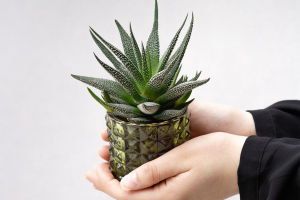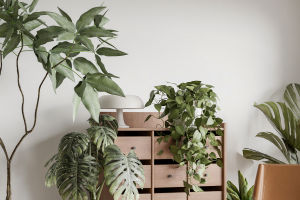Have you noticed how plants are no longer just decorations but treasures people are chasing like rare jewels? Across the world, a new craze for rare and exotic plants has transformed our homes, social feeds, and even our wallets.
Some of us admire them online, while others are willing to spend thousands of dollars to own one. Let’s explore why these plants are so fascinating, which species are leading the trend, and what this craze means for us as everyday plant lovers.
What Makes Rare & Exotic Plants Special?
Unlike ordinary greenery, rare and exotic plants catch our eyes with their unusual forms, vibrant patterns, and striking colors. Some glow with metallic sheens, others show off snowy white splashes or heart-shaped leaves that look painted by nature itself.
They aren’t just plants—they are like living artworks. This uniqueness, combined with limited supply, makes them irresistible. For many, collecting them is like collecting art pieces that grow and change over time.
The Social Media Spark
Social platforms like Instagram and TikTok have turned exotic plants into stars. Every time someone posts a photo of a massive glossy leaf or a perfectly variegated monstera, thousands of likes and comments follow.
We, as plant lovers, are inspired by these posts. Some of us start with one small tropical, while others dive deeper, looking for the rarest species to showcase. The more we share, the more the craze spreads—it’s a cycle of beauty, inspiration, and sometimes a little envy.
Green Superstars of the Craze
Here are a few plants that have become icons of the rare and exotic wave:
· Monstera Albo – Famous for its white-and-green marbled leaves, this plant looks like abstract art. Though it grows slowly, every new leaf feels like a surprise gift.
· Philodendron McDowell – With giant velvet-textured leaves and a purplish glow, this plant is a dramatic showpiece in any collection.
· Anthurium Clarinervium – Known as the “velvet heart,” its dark green leaves with striking white veins make it unforgettable.
· Philodendron Spiritus-Sancti – Nicknamed the “ghost philodendron,” it’s one of the rarest and most desired plants, with elongated white-toned leaves that look almost otherworldly.
Each of these green stars carries a story of rarity, beauty, and patience—because owning one is just the beginning. Caring for them takes time, knowledge, and love.
Why Are Prices Skyrocketing?
The answer is simple: supply and demand. Rare plants often grow slowly, and their unique mutations can be hard to reproduce. That means only a limited number reach the market. Add in the buzz on social media, and prices shoot up fast.
Some plants that once sold for a few hundred dollars now cost thousands. For collectors, these aren’t just purchases—they’re investments in living art. For us everyday plant lovers, it can be both fascinating and intimidating to see the numbers climb.
From Trend to Lifestyle
What’s special about this craze is that it isn’t only about spending money. It reflects how much we value beauty, calm, and a closer bond with nature in our daily lives. When we water these plants, adjust their light, or watch a new leaf unfurl, we feel joy and peace.
Even if we can’t afford the rarest species, we can still share in the experience. Many growers now trade cuttings, join online plant swaps, or explore nurseries for more affordable varieties. It’s not about owning the priciest plant—it’s about finding the one that makes us smile.
Tips for Beginners Who Want to Join
1. Start small – Pick an easier exotic plant, like a variegated pothos or calathea, before moving on to the rarest ones.
2. Learn care basics – Most exotic plants need good humidity, indirect light, and careful watering.
3. Join communities – Online groups or local swaps are great places to learn, trade, and find deals.
4. Set a budget – It’s easy to get carried away, so decide how much you’re willing to spend before diving in.
Embrace the Green Magic
Lykkers, the rare and exotic plant craze shows us something powerful: our shared love for beauty, growth, and nature. Whether we buy one, trade one, or simply admire them online, these plants bring us together.
They remind us to slow down, care for living things, and celebrate the magic of greenery in our homes. Let’s keep the joy alive—not just by chasing the rarest leaves, but by enjoying every moment of growth along the way.
So, Lykkers, tell us—if you had the chance, which rare or exotic plant would you love to bring home?


